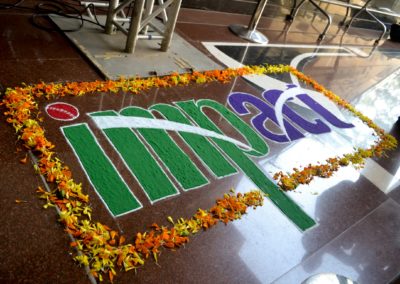.jpeg)
Under ASC 842, there is still a distinction between operating and finance lease classification, accounting, and financial statement presentation, despite both being recognized on the balance sheet. The classification of an operating lease versus a finance lease is determined by evaluating whether any of the five finance lease criteria are present. If a lease agreement contains at least one of the five criteria, it should be classified as a finance lease. Accounting for finance leases under ASC 842 is essentially the same as capital lease accounting under ASC 840. Similar to operating leases, a right-of-use asset and lease liability must be established at lease commencement (or transition to ASC 842 if the lease started prior), and then reduced over the remaining lease term.
Financial Planning and Analysis (FP&A)
- The software centralizes lease management data which allows for easy tracking of key dates like renewals and terminations.
- We hope that understanding the accounting for leases helped you discover the right lease life for you.
- He is a CFA charterholder as well as holding FINRA Series 7, 55 & 63 licenses.
- Over time, the lessee depreciates the asset while recognizing interest on the lease liability.
- Operating leases typically use shorter terms that do not cover most of the asset’s useful life, with total lease payments falling below the asset’s reasonable value.
- Capital leases differ from operating leases in that they are treated like asset purchases, affecting interest, depreciation, and tax deductions.
- In general, it can take anywhere from a few days to a few months to receive your equipment, depending on the manufacturer’s lead times.
Thus, it is a contact that allows the lessee to buy the asset at the end but at a lower price compared to the current market value. It has an effect in the financial statement and has some tax implications too. The process can be complex, depending on the nature of the asset and the terms of contract.
Understanding how a lease is classified and its impact to the business will equip your company to successfully maintain compliance under ASC 842. If title transfers to the lessee, the lease is classified as finance. For the remainder of the lease term, the imputed interest expense will be calculated using the same methodology in order to determine the interest expense paid per year. In this post, we’ll cover the differences, the rules involved, and how to ensure you’re doing your accounting right so you don’t accidentally create problems with your bookkeeping. In general, it can take anywhere from a few days to a few months to receive your equipment, depending on the manufacturer’s lead times.
Exercising a purchase option
Though we mentioned a lease must meet a minimum of one of these five criteria to be considered a finance lease, we have often found if a lease triggers the fifth test, it also triggers one of the other four tests. This is because most landlords likely factor in the future use for the asset when establishing the lease payments. Capital leases are used for long-term leases and for items that don’t become technologically obsolete, such as buildings and many kinds of machinery. If you are leasing a piece of machinery that you intend to use for a long time, you probably have a capital lease. If you are leasing a high-technology piece of equipment (copiers for your office, for example), you will probably have an operating lease. Because they are considered assets, capital leases may be eligible for depreciation.
We also specialize in offering fast and flexible equipment financing for a wide range of small businesses. Capital leases differ from operating leases in that they are treated like asset purchases, affecting interest, depreciation, and tax deductions. There is also depreciation involved in capital lease journal entries.
Accruent Lx Contracts: Best Lease Accouting Software
While there are similarities to how each classification is accounted for initially, there remain some notable differences. Lease classification significantly affects financial statements and perceptions of financial health. Finance leases increase both assets and capital operating lease liabilities on the balance sheet, impacting leverage ratios like debt-to-equity. These ratios are closely analyzed by creditors and investors to assess financial risk.
Simplify Lease Management
- The companies should carefully analyse the financial requirement and objectives along with the terms of the agreement before selecting the type of lease.
- The capital lease is structured or designed like that of a purchase or any financing agreement.
- Do you understand the details of each of those leases, or do you have that information readily available?
- If title transfers to the lessee, the lease is classified as finance.
- To record a capital lease in your business accounting system, you must first determine whether the business owns the leased item.
- Operating leases treat payments as fully deductible ordinary business expenses, offering a straightforward way to reduce taxable income without tracking depreciation.
Under U.S. GAAP, operating leases are treated as rental agreements, with lease payments recognized as an expense on a straight-line basis over the lease term. With a clear understanding of these leasing concepts and accounting standards, business owners and financial professionals can navigate lease agreements effectively, ensuring compliance and optimal financial outcomes. Capital leases are accounted for as both assets and liabilities on the lessee’s balance sheet. The leased item is listed under property, plant, and equipment (PPE) or an equivalent category, valued at either its fair value or the present value of future lease payments, whichever is lower. A capital lease is a long-term arrangement that provides the lessee with ownership-like benefits of the leased asset.
Operating leases cover the use of the vehicle, equipment, or other assets, making payments during the lease term. Often, corporations rent assets such as offices, equipment, and vehicles because renting is more economically viable than purchasing the asset outright. The lease payment obligations occur throughout the term of the lease, whereas a purchase signifies a lump sum, one-time outflow of cash. When tax season comes around, under current IRS rules, you can deduct the interest expense, but these deductions are typically lower than the rental expenses of an operating lease. Need assistance determining which type of financing lease option makes the most sense for your business? We can help you learn more about a capital vs. operating lease and determine if one is right for you.
.jpeg)
The method is chosen as per the company policies, the depreciation expense account is debited and accumulated depreciation is credited. During the time of sale or disposal, the remaining depreciation is amount is debited form the accumulated depreciation value and fixed asset account is credited due to sale. We hope that understanding the accounting for leases helped you discover the right lease life for you. So for all intents and purposes, the business owns that car for a temporary period of time. The depreciation and maintenance of the vehicle is the company responsibility – not the car company’s responsibility. At the end of the lease agreement, the company can buy the car and own it outright.
In contrast, in the case of leasing, the ownership is passed only on completion of the lease period. Therefore, this type of lease can be considered debt and incur interest expense for the lessee. The capital lease is structured or designed like that of a purchase or any financing agreement.
These tools provide important insights that support strategic financial planning and promote fiscal responsibility within the organization. Learn the details of both leasing options so you can make smart leasing decisions. The opening balance of the right-of-use asset (ROU) is reduced by the annual depreciation amount each year. Using the present value (PV) function in Excel, we can compute the right-of-use (ROU) asset as $372k as of the opening date, which refers to the end-of-period balance in Year 0.
The companies should carefully analyse the financial requirement and objectives along with the terms of the agreement before selecting the type of lease. This is because the financial reporting methods and the rights to ownership will vary based on them. Starting with capital leases, the rent-to-buy situation makes the asset behave like a fixed part of the business’ property.















